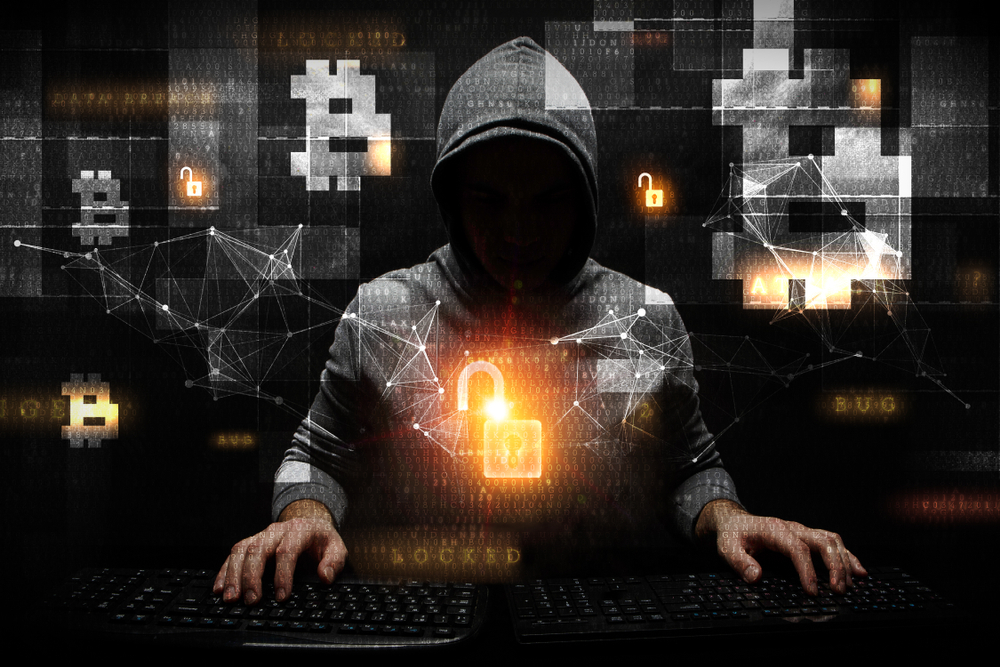Cybersecurity firm SonicWall has, in its recent report, revealed a 399% surge in cryptojacking. The firm noted that the education sector suffered 320x more cryptojackings by mid-2023 than in the entire year.
SonicWall revealed a weird revelation that market downturns trigger more attacks. The cybersecurity firm revealed that the typical ransomware is declining as businesses deny pay.
SonicWall reports that cryptojacking has become the preferred mode as criminal actors leverage crypto to extort unsuspecting victims.
Cryptojacking Surge 399%
The first half of last year saw 332.3M cryptojacking incidents, registering a 399% increase relative to the entire year’s activity. The incidents recorded by mid-2023 surpassed the figures registered from 2020 to 2022 cumulatively.
Cryptojacking taps servers and devices owned by other individuals to mine crypto assets with the privacy-centric token Monero, the preferred unit. The individuals affected hardly realize their vulnerability as victims since they only witness slower machines running.
SonicWall vice president in EMEA region Spencer Starkey revealed the obvious symptoms of cryptojacking involve slower device response, higher electricity bills, and excessive fan usage caused by overheated batteries.
Starkey observed that cryptojackers take longer to detect them, thus making them considered victimless crimes. It differs from impactful malware, which includes trojans and ransomware.
SonicWall report indicates that as Bitcoin prices plunge, the malicious actors are diverting their criminal activities to other targets. Market plunge yields the opposite effect that triggered increased attacks in pursuit of profits.
Criminal Actors Pursue Less Expensive Attacks
The criminal actors appear relentless in their illicit activities, with SonicWall data indicating they are opportunistic and target educational institutions, retail, and local governments. Besides schools, the actors target state governments, as revealed by SonicWall chief Bob VanKirk.
VanKirk indicated that the figures illustrate that malicious actors are seeking the less expensive and minimal-risk approaches to making fast cash.
The midyear report by SonicWall showed that most of the cryptojacking victims hail from Germany, UAE, Denmark, France, and the US. Europe saw a 788% increase in incidents.
The SonicWall report shows that cybercriminals are continually changing tactics to evade their capture.
The cybersecurity firm indicates a common approach for the victims is the distribution of HonkBox cryptojacking malware. Such utilizes the cracked versions of the video editor software – Final Cut Pro, perhaps proving no free lunch exists.
Cryptojacking may appear kinder relative to encrypting files and issuing threats to release unless paid. Still, the actors lack scruples as the education sector suffered 320x, and 69X incidents were reported in the healthcare sector by mid-2023 than the same time in 2022.
Product security vice president at SonicWall Bobby Cornwell demonstrated that the hackers pursue the weakest entry points. Such entry offers the lightest of repercussions and minimizes risk exposure while optimizing the profits.
The report warns against writing off ransomware threats that brought the National Health Service in the UK to its lowest in 2017. Also, Ransomware stalled the Colonial Pipeline in 2021, with the sobering figures confirming that crypto-hungry hackers still exist.
Starkey warned that cryptojacking adoption extends to the nation-state-backed threats and employees involved in deploying miners to tap the corporate infrastructure without consent.
Starkey warns that the covert detection footprint and the huge return on investment could trigger the huge adoption of cryptojacking. Such scales could extend the threat across a diversified actor ecosystem.
